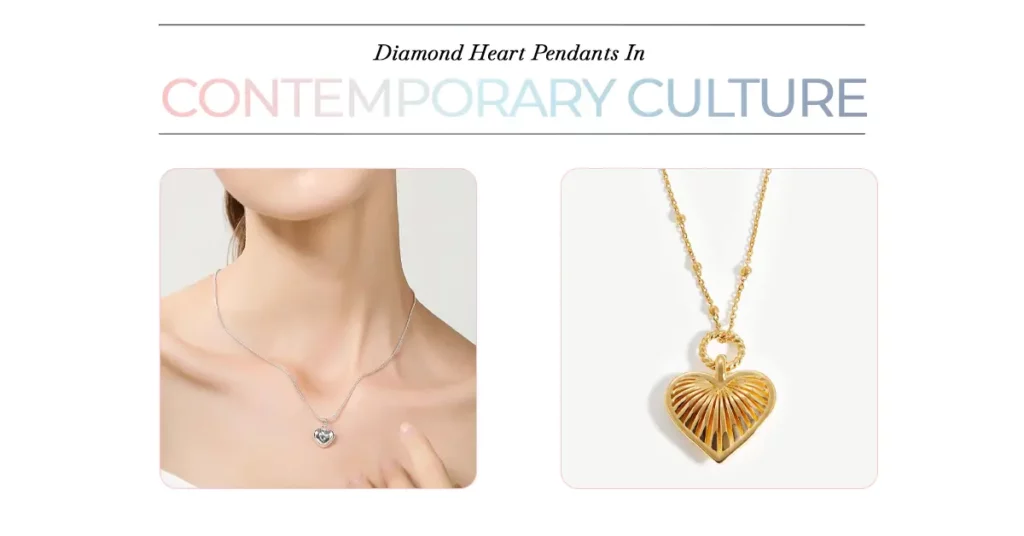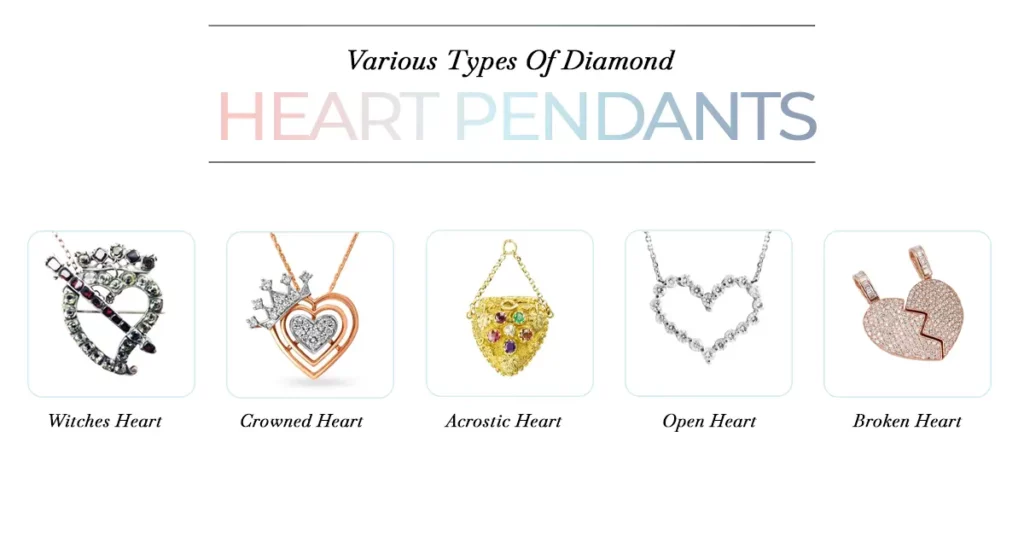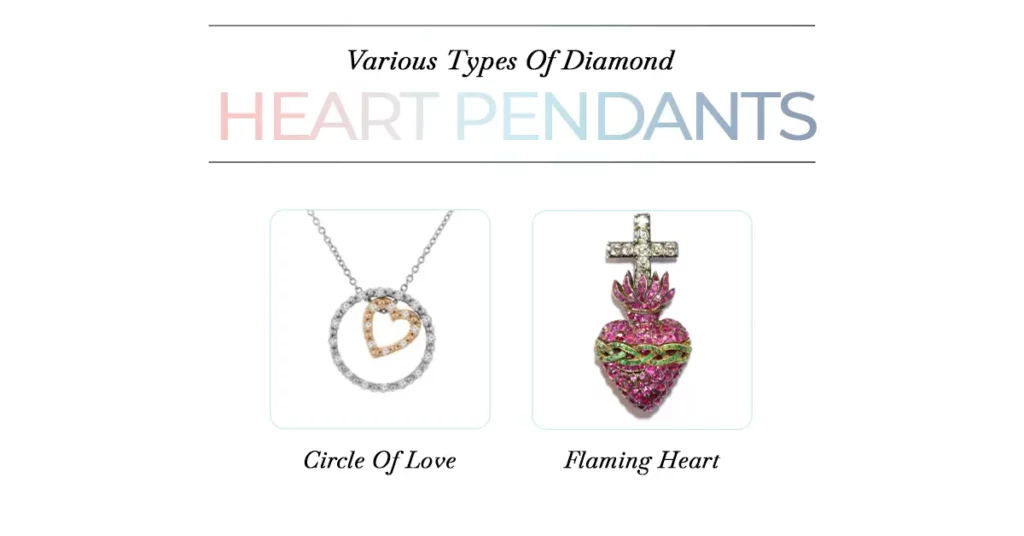
Throughout history, diamond heart pendants have adorned the necks of women across the globe as a symbol of unwavering affection and commitment from their loved ones.
The heart shape is a universally recognized symbol of love today, and diamonds are synonymous with purity, strength, and durability. That said, as common as they are in this day and age, do we truly understand the symbolism of these sparking jewels? In this blog post, we will explore the history and uncover the true meaning of diamond heart pendants and how they express deep emotions like love and friendship.
Hearts symbolize delicate human emotions, and they come from a place of vulnerability. A diamond symbolizes strength under pressure, durability, and permanence. These are the traits we wish to see and experience in true love.
The earliest records of heart-shaped jewelry date back to the 15th and 16th centuries. In 1463, a heart-shaped diamond debuted during a private conversation between the Duke of Milan, Galeazzo Maria Sforza, and his confidante, Nicodemo.
Not long after, royal dignitaries and aristocrats who could afford that kind of extravaganza sought after exquisite heart-shaped diamond stones. During this time, they were seen as a symbol of royalty.
In 1562, Mary, Queen of Scots, sent England’s Queen Elizabeth I a beautiful heart-shaped diamond ring. This gesture went down in history as the most sincere symbol of amity ever.
Since this is the most famous early heart-shaped diamond reference, historians believe it was during this time that the diamond heart became associated as a symbol of love and admiration.
Heart-shaped diamonds are relatively more accessible to the masses today. However, they are still the most expensive cut because of the specialized tools and labor required to reach the symmetrical shape.

Heart-shaped jewelry designs have changed over centuries and have taken on many forms. Initially, the hearts were pear-shaped, but slowly, they evolved into an oval shape and, eventually, the heart-shaped symbol we’re all familiar with.
These exquisite jewelry pieces are commonly purchased during Valentine’s Day, Engagements, and Weddings. They are an unmistakable symbol of love.
The Taj Mahal diamond is an exquisite and rare part of Indian history. Richard Burton gifted this heart-shaped diamond to Elizabeth Taylor for her 40th birthday in 1972. The diamond is large and flat, adorned with rubies in a gold necklace.
This world-famous diamond was originally a gift from Shah Jahan to his favorite wife, Nur Jahan, the queen for whom Shah Jahan built the Taj Mahal. After Elizabeth Taylor passed away, the diamond was sold at an auction for 8 million USD.
Another legendary diamond is The Blue Heart Diamond. It is a 30.62-carat diamond, first discovered in South Africa. It was found at the Premier Mine and weighed roughly 100.5 carats. In 1910, it was given shape by a French Jeweller named Atanik Eknayan after a diamond mining company bought it.
It was made the centerpiece of an ornament necklace before it was sold to an Argentinian family. In 1953, it was made into a pendant after Van Cleef and Arpels purchased it. It was then sold a few times, and it was last owned by Marjorie M. Post, which was gifted to the Smithsonian Institute by her in 1964.
The Cullinan Diamond V is a heart-shaped, one of nine diamond cuts originating from the world-famous Cullinan Diamond – the largest ever gem-quality diamond to be discovered. It was gifted to Queen Mary in 1910 by the South African government. It was last worn by the late Queen Elizabeth II, granddaughter of Queen Mary.

As we have seen, heart-shaped diamond pendants became popular in jewelry design throughout the centuries, especially during the Georgian and Victorian times. Different styles of hearts symbolize different things. Let’s explore some of these styles:
Witche’s Heart pendants were shaped with a curve at the bottom to one side and were initially worn as an amulet to protect the wearer against evil.
In Scottish culture, it was called the ‘Luckenbooth’ heart, implying that the recipient was given the pendant as proof of being “bewitched” by the giver.
The Crowned heart diamond pendant symbolized “the reigning of fidelity over a marriage” or “ruler of one’s heart.” This form of diamond pendant was trendy in the 1800s.
Acrostic Heart pendants are made of gemstones whose first letters spelled out a name, date, or term of affection.
For example, a heart made of ruby, emerald, garnet, amethyst, ruby, and diamond would spell out “REGARD.” It is believed that Jean-Baptiste Mellerio of the House of Mellerio was the first to create acrostic jewelry. His jewels would spell “j’adore.”
A heart-shaped pendant with an open space in the middle. This can symbolize the heart of the person who is receiving the piece, accepting the love that is being given to them.
It is widely believed that it is symbolic of love for a person who is geographically far away. It represents the strong connection that two lovers share. It can also mean having an open heart and being accepting of those around you.
This does not mean a literal broken heart. A broken heart pendant comprises two halves of a heart that can be detached or attached as one.
This symbolizes that you share a piece of your heart with your other half, be it a life partner, friend, or family member. It represents the idea of not feeling complete without the other person who holds the other half.

A pendant that features a circle or multiple circles of diamonds around a heart. This pendant represents the bond between you and your loved ones. The multiple intertwined rings represent that people add beauty to our lives, and as social creatures, we can’t live alone.
Our friends, family, and partners define the purpose of our life. This pendant can be personalized by engraving the names of your favorite people on the rings.
This pendant represents the burning passion of undying love for a person or towards faith or religion.
The allure and significance of heart-shaped diamond pendants extend far beyond their dazzling appearance. These timeless jewels carry a rich history of symbolism, representing profound emotions like love, friendship, and loyalty.
From their earliest appearances as symbols of royalty in the 15th and 16th centuries to today’s fashion icons, these exquisite pendants continue to be cherished as unmistakable tokens of affection. So, the next time you see a heart-shaped diamond pendant shimmering with brilliance, remember its rich history and the multitude of emotions it represents.
Yes, they are rare. It requires the skills of a master diamond cutter so that the result is precise and as envisioned.
Since the design is complex, it is recommended that the size of the diamond be above .5 carats since the shape is best highlighted at this carat weight and beyond.
Lab-grown diamonds are just as beautiful as naturally occurring minded diamonds, with the expectation of being environmentally and socially friendly. (as in, they are not sourced from conflict zones via human exploitation.) They can also be customized to your specific needs.
A diamond heart pendant is a precious and delicate piece of jewelry that requires proper care and maintenance. Clean your pendant regularly with a soft cloth or a mild soap and water solution. Avoid harsh chemicals or abrasives that may damage the diamond or the metal.
Shop by metal
Shop by diamond
@ All rights reserved La Joya Jewelry Inc